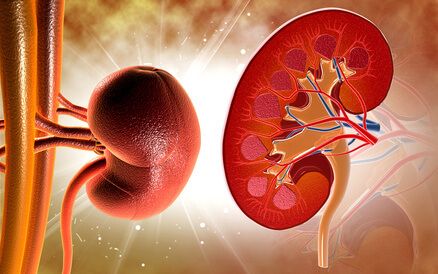Cardiovascular disease is one of the main causes of morbidity and mortality in patients with advanced chronic kidney disease (CKD), and vice-versa. Both diseases share risk factors, including, but not limited to, diabetes, high blood pressure, smoking, dyslipidemia, and old age.

As kidney disease develops, its severity grade has been linked to more thrombotic events (due to inflammation, platelet dysfunction, and coagulation).
Patients with mild renal impairment have been underrepresented in most previous studies, as renal function is usually dichotomic: CKD present or absent (eGFR <60 vs. >60 mL/min/1.73 m2, respectively).
The aim of this study was establishing the risk of major adverse cardiac events (MACE) and the benefit of different revascularization modalities in patients with mild renal impairment compared with patients with preserved renal function or severe CKD.
Researchers analyzed the Asan Medical Center–Multivessel Revascularization” registry from Seul, Korea. This registry included 10,354 patients who underwent percutaneous transluminal coronary angioplasty (PTCA) or myocardial revascularization surgery (MRS) with an average follow-up of 6.6 years.
Different groups of renal involvement according to pre-defined CKD stages (stage II eGFR of 60-89 mL/min/1.73 m2; stage III, eGFR of 30-59 mL/min/1.73 m2) vs. normal kidney function (stage I, eGFR of 90-150 mL/min/1.73 m2), excluding patients with severely advanced disease.
The primary outcome was a composite of all-cause mortality, spontaneous AMI, or stroke. The secondary outcome was included the individual components of the primary outcome and repeat revascularization.
In the raw analysis of the primary outcome, stage II patients had significantly higher rates compared with stage I (hazard ratio [HR]: 1.6; 95% confidence interval [CI]: 1.42-1.81; p < 0.01). However, after propensity-score analysis, adjusted risk showed no significant differences between said stages (HR: 1.12; 95% CI: 0.97-1.30; p =0.12). Furthermore, adjusted secondary outcomes presented no difference either.
Read also: WOEST 2 | Dual Versus Triple Antithrombotic Scheme in the Real World.
However, when comparing stage I and III—both in the raw and the propensity-score analyses—, event rates were much higher in stage III.
When evaluating different types of revascularization on stages I, II and III (in the adjusted analysis), no significant difference was observed in the primary outcome of the PTCA strategy compared with CRM, having both a similar mortality risk.
Conclusions
Propensity score adjustment resulted in no greater risk for events in terms of the primary outcome of death, spontaneous AMI, or stroke in patients with mild renal impairment (stage II) compared with patients with normal renal function (stage I). After 6 years of follow-up, events were similar for PTCA or CRM in all evaluated groups (I, II, and III).

Dr. Omar Tupayachi.
Member of the Editorial Board of SOLACI.org .
Original Title: Prognostic Impact of Mildly Impaired Renal Function in Patients Undergoing Multivessel Coronary Revascularization
Reference: Kim TO, et al. J Am Coll Cardiol [Internet]. 2022;79(13):1270–84.
Subscribe to our weekly newsletter
Get the latest scientific articles on interventional cardiology





